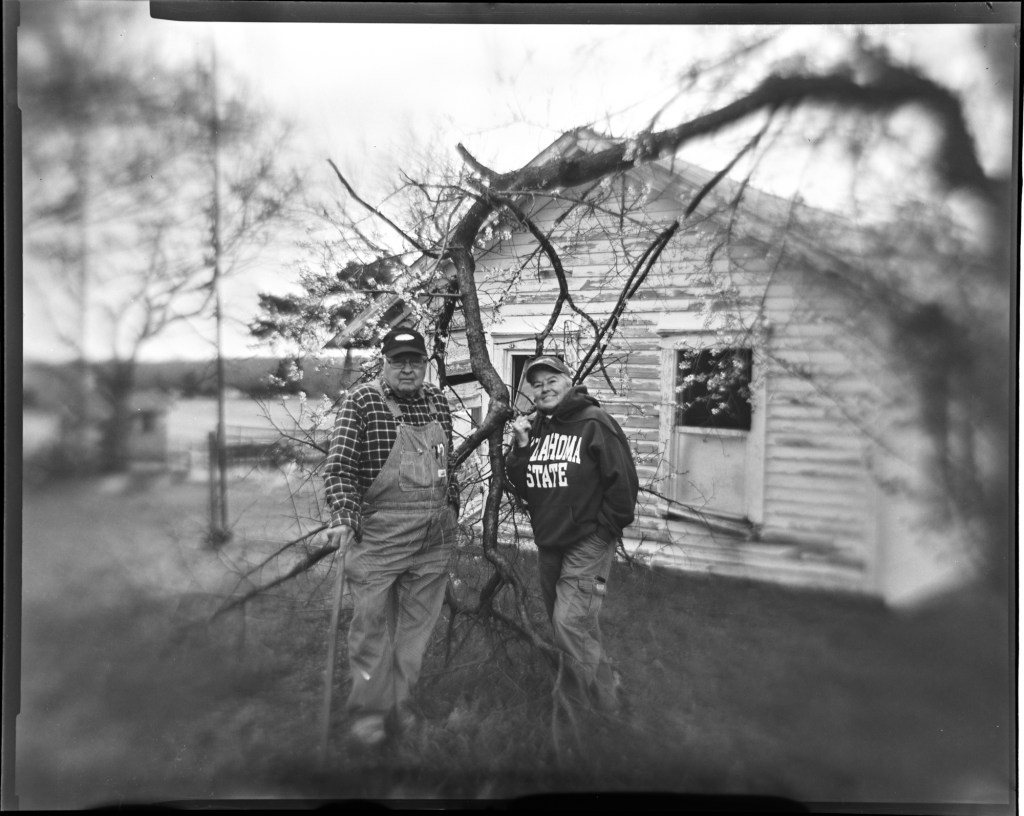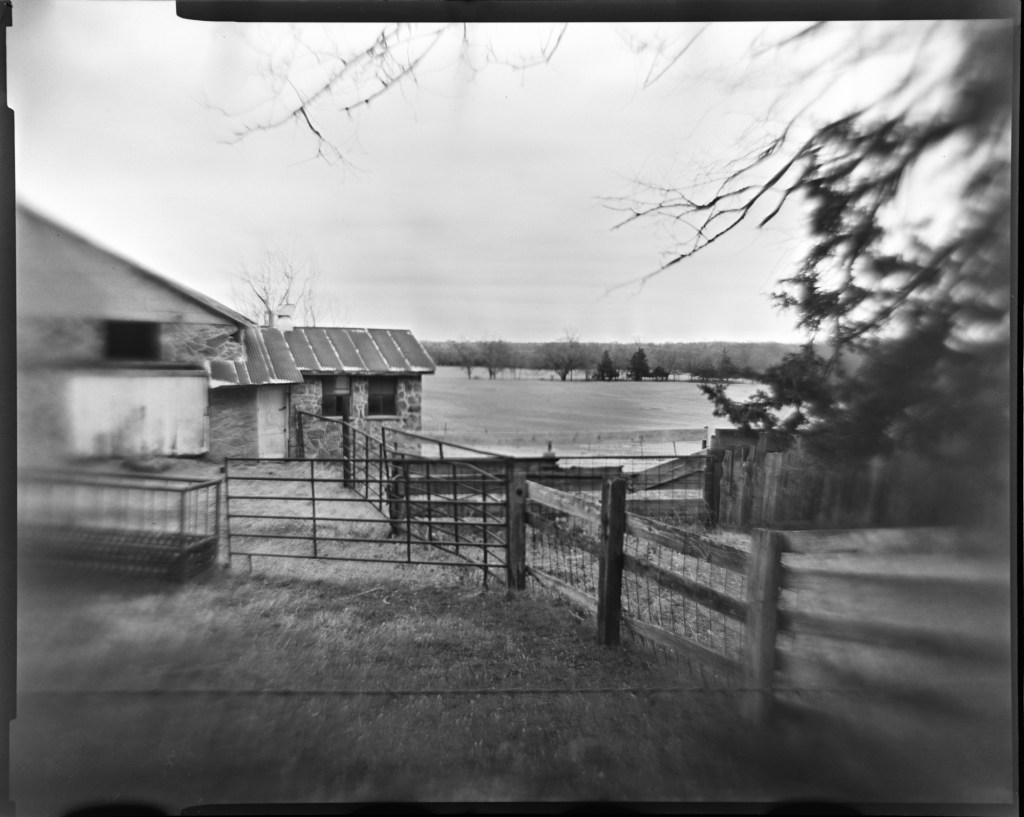
The Mid South happened a little over a month ago and after a few weeks of sheltering in place, this race, or any racing for that matter, offers a sense of nostalgia.
Erik just dropped off his captures of a two part series from what was formally known as Land Run 100. The first part dives into the history and interviews whereas part two of the series, below, is a collection of diptychs of the seven participants before and after what turned out to be an epically beautiful mud fest along with an exact set of questions.
Oh, and don’t forget to click on the photos to enlarge details!
Tyson Branyon
Before
How are you feeling?
OK
What do you think will happen out there?
10% might finish.
What are you hoping to take away from the experience?
I don’t know. When you’re 70 there’s not much upside on the learning curve. It’s going to be wet and muddy, so we’ll see!
After
How are you feeling?
I’m a little bit pissed off.
What happened out there?
I got out in the rain and all that mud, and that I had a mechanical. I was just in the mood to finish a hundred miles!
What are you taking away from the experience?
Even though I think I’m not ego driven when I had that mechanical I got pissed. I said f*ck this and I spent 40 minutes trying to fix the brakes and riding 40 minutes riding metal on metal with no brake pads until the cable broke. On some downhill I thought, “This is stupid.” A support jeep was right there so I finally stopped.
Michelle Hance
Before
How are you feeling?
I am feeling excited, pretty nervous, but I live in a place where it rains every single day. It does not get muddy like it does here because our ground is used to that kind of thing. It’ll be fun, an adventure!
What do you think will happen out there?
Well hopefully I’m gonna finish. But who knows? We’ll find out!
What are you hoping to take away from the experience?
That’s a hard question. I’m really hoping to give it all I’ve got and at the end be proud of what I’ve done. That’s my favorite thing. When you finish and you’re like, “I’ve that I didn’t know if I could do it or not.” That’s 100% what this (the MidSouth) is, especially with the rain. I don’t know if I can do it.
After
How are you feeling?
I’m feeling pretty excited that I survived! *laughs*
What happened out there?
The first 30 miles or so were just kinda wet and not so bad. Then it got really…dark and started getting muddy. It got really bad. Around mile 40, mile 45 I had a major attitude adjustment and I was like, “All right, I’m gonna finish this! It’s gonna be fine.” And then I actually made pretty good progress until mile 80, 85 and that’s when it started getting really muddy again. The stream crossing actually helped alot to clean off my chain, cassette and all that! It saved my shifting all the way to the very end.
Those last 15 miles I was like, “I’m not quitting! I’m almost done!”
What are you taking away from the experience?
I finished. I’m pretty proud of that! I feel like I had a pretty positive for the most of it. There is something to be said for that. I’m glad that I was able to, other than a few rough sections, be pretty excited about what I was doing and making sure I was having a good time.
I also made a bunch of friends, which is the best thing about gravel racing! Suffering out there with a bunch of people is awesome!!
Alexandera Houchin
Before
How are you feeling?
I’m f*ckin’ stoked! *laughter*
What do you think will happen out there?
I think I am going to get wet and then I am going to dry off.
What are you hoping to take away from the experience?
I’m hoping to listen to some of my biochemistry podcasts and get a little dirty.
After
How are you feeling?
Like a rock star!
What happened out there?
My bike gained some weight, like 500lbs.
What are you taking away from the experience?
Oklahoma is rad!
Mark Wood, 13
Before
How are you feeling?
I’m feeling great. I’m just going to try to get out there and do what I can.
What do you think will happen out there?
I think it’s going to get way muddy but I’m just going to try to walk through it if I have to.
What are you hoping to take away from the experience?
I’m going to try to take away some enjoyment and something that I can really keep thinking about how it felt in that moment.
After
How are you feeling?
I’m feeling a little less accomplished than I set out to feel like, but I still feel proud of myself for getting out there when alot of people didn’t.
What happened out there?
It got really really muddy and cold. My feet just got like really cold and I was shivering even in the shower back home. I just couldn’t do any more out there.
What are you taking away from the experience?
I am going to take away a learning experience until the next year comes and I try it again.
Andrew Strempke
Before
How are you feeling?
Oh I am so excited. So excited!
What do you think will happen out there?
I hope there is plenty of mud because I am singlespeeding. The more mud the better!
What are you hoping to take away from the experience?
I don’t know. I’m hoping to go fast and have fun!
After
How are you feeling?
I’m feeling good. I’m feeling tired!
What happened out there?
It was wet, it was soft pretty much everywhere and I was wishing I had one easier tooth on the rear cog but yeah, it was really hard and it was really fun. It was just muddy all day long. It got really messy. Yeah, it was a great day on the bike. A great day for some walking! *laughs*
What are you taking away from the experience?
I got a a bunch of good mud riding practice in. A bunch of hike a bike practice. My qualification for a real good course is you have to walk your bike at some point and I definitely did that today.
Katie Strempke
Before
How are you feeling?
Excited to get out there in the mud! *laughs*
What do you think will happen out there?
I think…hopefully there will still be some fast sections but I think there is going to be some walking for sure. Looking forward to it!
What are you hoping to take away from the experience?
I’m looking for a little bit of redemption from 2017 which was the last time it was kind of like this. I quit because I got really cold so this time I want to finish.
After
How are you feeling?
I’ve got alot of adrenaline right now so I’m feeling pretty good!
What happened out there?
It was muddy like pretty much the whole time, but it was super fun. I was on a singlespeed so I was able to ride almost everything. I had a good day!
What are you taking away from the experience?
That you can do hard things! As long as you keep a positive attitude. *laughs*
Ashley Davis, 16
Before
How are you feeling?
Cold and excited.
What do you think will happen out there?
Lots of mud. Definitely lots of mud. And I think it’s going to be a really fun ride.
What are you hoping to take away from the experience?
100 miles? 100 miles and an experience. Definitely an experience!
After
How are you feeling?
Mentally and physically tired.
What happened out there?
It was really muddy, my bike had alot of issues and I’m just surprised I even made it to the 50.
What are you taking away from the experience?
Just the mud! Definitely the mud. It definitely helped me mentally to get stronger and just, just getting to the 50.


































